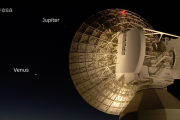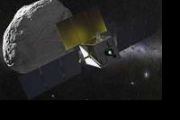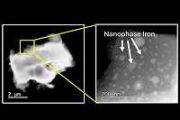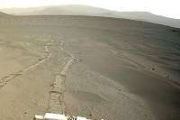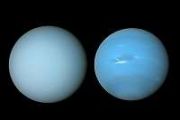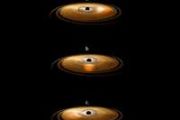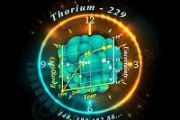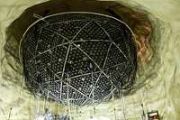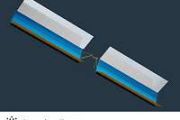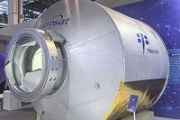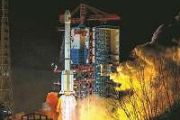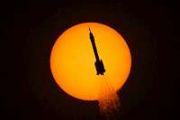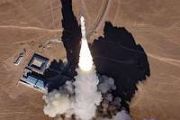
Copernical Team
7 Must-Read Astronautics Books for Future Aerospace Engineers
 Astronautical engineering is the branch of aerospace engineering that focuses on designing and developing the science of space exploration. However, its value does not start with rockets and satellites-it begins with concepts, words, and numbers. It starts with books.
Astronautical engineering is the branch of aerospace engineering that focuses on designing and developing the science of space exploration. However, its value does not start with rockets and satellites-it begins with concepts, words, and numbers. It starts with books. Watch: MetOp-SG-A1 and Sentinel-5 media briefing

With launch slated for August, the first MetOp Second Generation satellite, MetOp-SG-A1, which also carries the Copernicus Sentinel-5 mission, is currently undergoing final preparations for liftoff aboard an Ariane 6 rocket from Europe’s Spaceport in French Guiana.
Ignis Mission: Return to Earth
 Video:
00:03:46
Video:
00:03:46
On 15 July 2025, with the splashdown of the Dragon capsule off the coast of California, the Ignis mission ended after a 20-day space journey. ESA project astronaut Sławosz Uznański-Wiśniewski from Poland, during nearly 230 orbits around Earth, completed about 120 hours of telework on the International Space Station and contributed to more than 20 experiments from his orbital office.
Following medical checks on the recovery vessel, Sławosz flew to shore by helicopter and then travelled from the United States to Germany in order to undergo a week of recovery at the European Astronaut Centre. Dozens of people
Sea-level monitoring satellite Sentinel-6B sets sail

The next sea-level monitoring satellite, Copernicus Sentinel-6B, has begun its journey from Europe to the Vandenberg Space Force Base in California, where it is scheduled to launch in November. Carefully packed into a climate-controlled container, the satellite is currently crossing the Atlantic Ocean aboard the cargo ship Industrial Dolphin.
Is it worth going back to the moon?
This request seems a bit unusual, so we need to confirm that you're human. Please press and hold the button until it turns completely green. Thank you for your cooperation!
Press and hold the button
If you believe this is an error, please contact our support team.
185.132.36.159 : 8d5ac6aa-d2a5-49ec-8b2d-b3efb1f2
Engineers study little-known hazard of lunar landings
This request seems a bit unusual, so we need to confirm that you're human. Please press and hold the button until it turns completely green. Thank you for your cooperation!
Press and hold the button
If you believe this is an error, please contact our support team.
185.132.36.159 : 11a56cf7-0e3a-403e-9eca-def07817
Antarctic isolation causes temporary gray matter loss with lingering thalamic changes
This request seems a bit unusual, so we need to confirm that you're human. Please press and hold the button until it turns completely green. Thank you for your cooperation!
Press and hold the button
If you believe this is an error, please contact our support team.
185.132.36.159 : 141d99c2-6ec9-48c3-9d43-1ea21de5
Evening SpaceX launch on tap from Cape Canaveral if weather holds
This request seems a bit unusual, so we need to confirm that you're human. Please press and hold the button until it turns completely green. Thank you for your cooperation!
Press and hold the button
If you believe this is an error, please contact our support team.
185.132.36.159 : a0697531-da56-4b80-a9dd-ed076d22
NASA Research Shows Path Toward Protocells on Titan
 NASA research has shown that cell-like compartments called vesicles could form naturally in the lakes of Saturn's moon Titan.
Titan is the only world apart from Earth that is known to have liquid on its surface. However, Titan's lakes and seas are not filled with water. Instead, they contain liquid hydrocarbons like ethane and methane.
On Earth, liquid water is thought to have been e
NASA research has shown that cell-like compartments called vesicles could form naturally in the lakes of Saturn's moon Titan.
Titan is the only world apart from Earth that is known to have liquid on its surface. However, Titan's lakes and seas are not filled with water. Instead, they contain liquid hydrocarbons like ethane and methane.
On Earth, liquid water is thought to have been e Rare Trans Neptunian Object Reveals Unexpected Orbital Dance with Neptune
 A rare celestial body drifting far beyond Neptune, designated 2020 VN40, has been identified by astronomers from the Center for Astrophysics | Harvard and Smithsonian as the first confirmed object to complete one orbit around the sun for every ten orbits made by Neptune. This discovery adds a new chapter to the understanding of orbital resonances in the outer solar system.
The trans-Neptun
A rare celestial body drifting far beyond Neptune, designated 2020 VN40, has been identified by astronomers from the Center for Astrophysics | Harvard and Smithsonian as the first confirmed object to complete one orbit around the sun for every ten orbits made by Neptune. This discovery adds a new chapter to the understanding of orbital resonances in the outer solar system.
The trans-Neptun 











